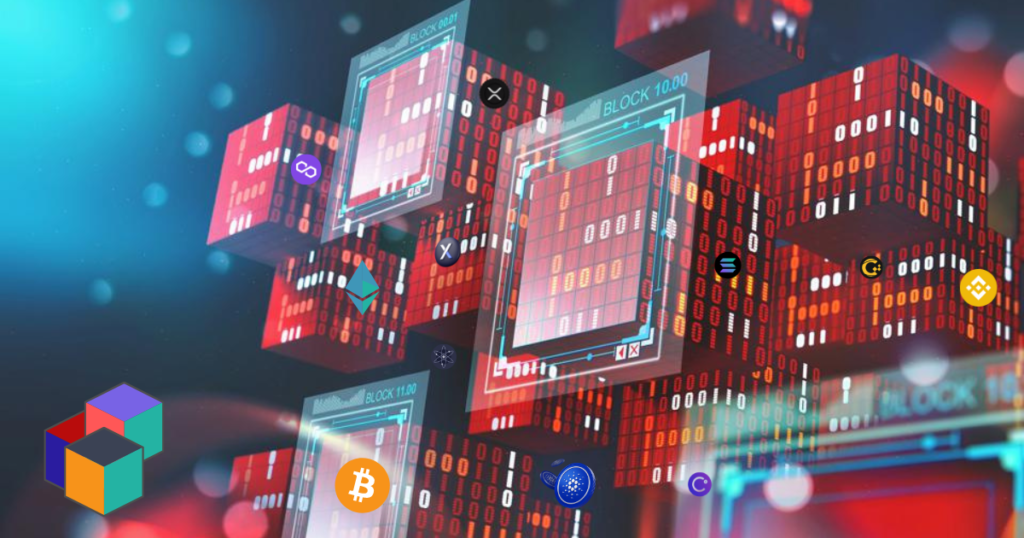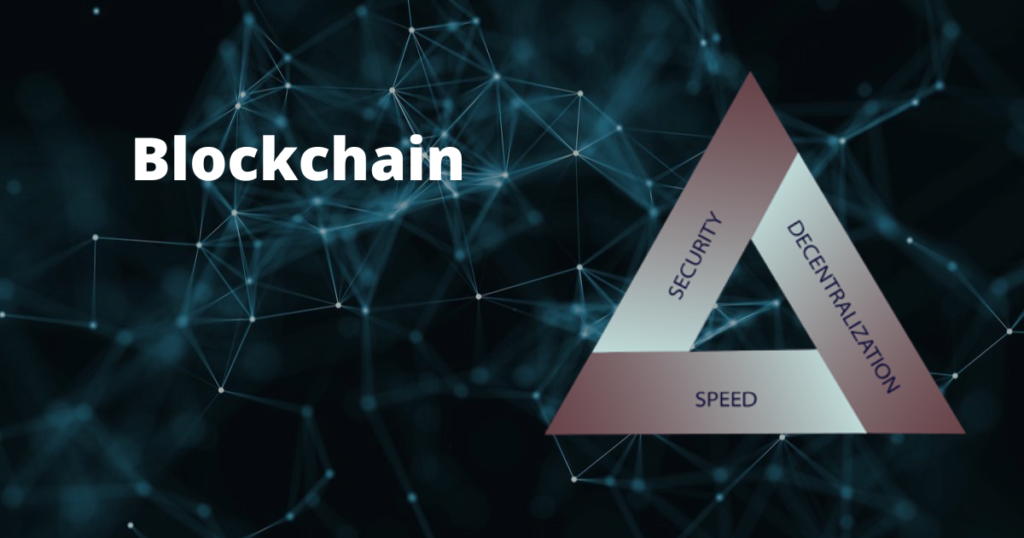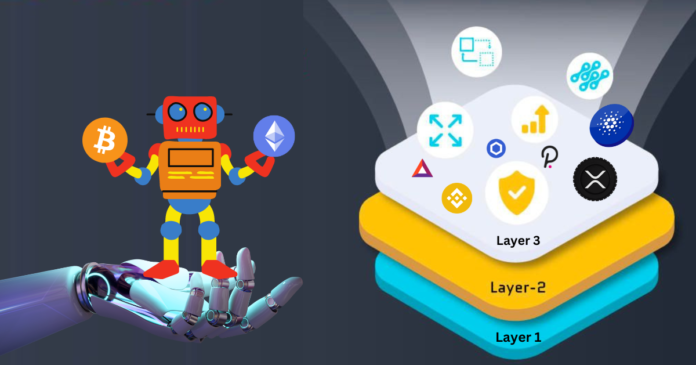A base network’s core infrastructure such as that of bitcoin, BNB chain, or Ethereum is called layer 1 Blockchain. Without a second network, layer 1 blockchain can validate and complete transactions. As we’ve seen with bitcoin increasing the scalability of a layer 1 network is challenging. As a fix developers develop layer 2 protocols that rely on the layer 1 network for consensus and security as a layer. One example of the layer 2 protocol is the lightning network used by bitcoin.
In this article, we’re going to learn about blockchain layer 1 and layer 2 terminologies to understand the architecture of various blockchain projects and development tools, how they relate to each other and why it’s important for you to know.
What is layer 1 in Blockchain?
A base blockchain is also known as a layer 1 network. Layer 1 protocols include BNB smart chain, Ethereum, bitcoin, and Solana. Since these are the primary networks in their ecosystem I refer to them as layer 1. There are off chains and another layer 2 solution constructed on top of the direct chains in contrast to layer 1 solutions. In other words, when a protocol conducts and completes transactions on its blockchain it is considered a layer 1. Additionally, they have a native token that they use to cover transaction costs.
Scaling at layer 1 Blockchain
Layer 1 networks frequently experience scalability problems. In times of heightened demand bitcoin and other large blockchains have had difficulty processing transactions. The proof of work consensus algorithm used by bitcoin uses much computational power. Although proof of work guarantees decentralization and security pow networks also tend to be sluggish when there are too many transactions. As a result, fees go up and transaction confirmation times lengthen.
Although blockchain developers have been focusing on scalability issues for a while there is still much debate over the optimal choices.
Options for layer 1 scaling include:

Options for layer 1 scaling include expanding block size to allow for more transactions per block. Changing the chosen consensus method with the Ethereum 2.0 upgrade and utilizing the sharding technique for partitioning databases. Implementing improvements from layer 1 takes a lot of work. It’s common for not all network users to accept the changes. this may result in community divisions or perhaps a hard fork as happened in 2017 with the split between bitcoin and bitcoin cash.
Segwit
Bitcoin’s Segwit is an example of a layer 1 scaling solution, by segregated witness reorganizing block data boosted bitcoin’s throughput or digital signatures that are no longer part of the transaction input. The modification increased the amount of room available for transactions per block without compromising network security. A soft fork that was backward compatible was used to implement Segwit. This implies that transactions can still be processed by bitcoin nodes that have not yet been updated to support Segwit.
How does layer 1 sharding work?
Sharding is a popular layer 1 scaling technique for increasing transaction throughput. This method is a type of database partitioning that can be used with distributed ledgers on blockchains. A network and its nodes are split into many shards to distribute the workload and increase transaction speed. Each fragment controls a portion of the network’s activity. Each has its transaction nodes and distinct blocks. Thanks to sharding each node does not have to keep a complete copy of the entire blockchain.
To transmit the status of their local data including addresses balances and other essential metrics each node instead reports the work accomplished to the main chain.
Layer 1 vs layer 2
Not all issues with improvements can be resolved on layer 1 of the model. Due to technological limitations, some changes are challenging to implement or nearly impossible to implement for instance proof of stake is being upgraded in Ethereum. Although this procedure took years to build. Due to scalability difficulties, some use cases cannot operate with layer 1. A blockchain game could not realistically use the bitcoin network due to the slow transaction speeds. The game may still use the security and decentralization of layer 1, but the best choice is to implement a layer 2 solution on the web.
Solutions for the lightning network layer 2
Solutions for the lightning network layer 2 rely on and build upon layer 1 to complete transactions. The lightning network is a well-known illustration, transaction processing on the bitcoin network might take hours when there is high demand. Users can send bitcoin quickly off the main chain using the lightning network and the total balance is reported back to the main chain afterward. As a result time and resources are saved because all transactions are virtually combined into a single record.
Blockchain layer 1 examples

Let’s examine several examples now that we know what layer 1 blockchain is. Layer 1 blockchains come in great diversity and many of them offer exceptional use cases. There are other blockchain networks and each one uniquely addresses the trilemma of decentralization security and scalability. Blockchain technology is not just about bitcoin and Ethereum.
Related: What Is The Blockchain Trilemma?
Elrond
Elrond is a layer 1 network established in 2018 and uses sharding to increase its scalability and performance. Over 100, 000 transactions can be processed per second on the Elrond blockchain. Its two distinguishing features are its secure proof of stake or Spos consensus algorithm and adaptive state sharding.
State adaptive sharding refers to when the network loses or gains users sharding occurs through shard splits and mergers. Sharding affects every network architecture aspect including its state and transactions, additionally, validators switch between shards which lessens the possibility of a hostile takeover of a fragment.
The native token of Elrond EGLD is employed for transaction costs dap deployment and rewarding users who participate in the network’s validation system. Additionally, because it offsets more co2 than its pos mechanism is responsible for the Elrond network is recognized as carbon negative.
Harmony
Harmony is a layer 1 blockchain compelling proof of stake or epos network that supports sharding. The manner of the blockchain includes four shards each of which concurrently generates and verifies new blocks. Every fragment can have a different block height because it can move at its own pace. For the purpose of attracting users and developers, Harmony uses a cross-chain finance strategy. Without the typical custodial issues with bridges, users can swap their tokens. Thanks to the crucial role played by trustless bridges between Ethereum and bitcoin.
Decentralized autonomous organizations and zero-knowledge proofs are the cornerstones of harmony’s fundamental idea for scaling web3. Users find harmony’s bridging services appealing since the future of defy appears to be centered on prospects for multi-chain and cross-chain transactions.
The main focus areas are NFT infrastructure dow tooling and inner protocol bridges. Blockchain games couldn’t use the bitcoin network in a realistic manner because of the slow transaction speeds. It can also be staked to participate in harmony’s governance and consensus mechanism. This offers block rewards and transaction fees to successful validators.
Celo
Go Ethereum or Geth and Celo a layer 1 network forked in 2017, however, it’s made some critical adjustments such as introducing pos and a distinctive address scheme. Defi, NFTs, and payment options are all a part of the sella web3 ecosystem, which has confirmed over 100 million transactions. An email address or phone number can be used as a public key on Celo by anyone. The blockchain can easily be run on standard computers because it does not require specialized hardware.
The primary token of Celo is Celo a standard utility token used for rewards, security, and transactions. The stablecoins CUSD, CEUR, and CRILL are also available on the cello network. Users create these and a system akin to maker DAO’s die is used to keep track of their pegs. Transactions made with Celo stablecoins may also be settled using any other Celo asset. The stablecoin and address system developed by Celo is intended to increase cryptocurrency adoption, as many people may find the cryptocurrency market’s volatility and challenges for beginners disheartening.
Thor chain
Across-chain permissionless decentralized exchange is thor chain. Using the cosmos SDK a layer 1 network was constructed. It also validates transactions using the tender mint consensus process. Decentralized cross-chain liquidity without the need to peg or wrap assets is the main objective of thor chain. Pegging and wrapping increase process risk for multi-chain investors. In essence, the thor chain manages the vault and keeps track of deposits and withdrawals, by doing so centralized intermediaries are eliminated and decentralized liquidity is created.
The native token of thor chain Rune is utilized for governance, security, validation, and transaction fees. Rune serves as the basis pair in thor chain’s automated market maker or AMM model, making it possible to swap Rune for any other supported asset. The project functions somewhat like a cross-chain uni-swap. With Rune serving as a security asset and settlement asset for liquidity pools.

Kava
kava combines the speed and interoperability of the cosmos with Ethereum’s developer-friendly environment. The kava network offers a unique blockchain for EVM and cosmos SDK development environments using a co-chain design. Developers can now release decentralized applications that easily interact across the cosmos and Ethereum ecosystems. Thanks to IBC support on the cosmos code chain, kava leverages the tender mint pos consensus algorithm giving the EVM co-applications chain robust scalability.
The kava network supported by Kavidao includes open on-chain developer incentives intended to honor the top 100 projects on each code chain based on consumption. Kava’s native utility and governance token is kava, while its USDX stablecoin is pegged to the US dollar. Validators state kava to create network consensus and utilize it to pay transaction fees. Users can assign validators to their state kava to partake in kava emissions. On proposals for network-wide governance, Stakers and validators may also vote.
ioTex
A layer 1 network focused on fusing blockchain and the internet of things was established in 2017. Giving consumers authority over the data their devices produce makes machine-backed Dapps assets and services possible. Managing your data on a blockchain ensures secure ownership and gives it value. With the help of ioTex’s hardware and software individuals now have a new way to manage their data and privacy without compromising their user experience.
Machine phy is the name of the technology that lets people generate digital assets from their real-world data. IoTex has released two notable pieces of hardware, the UCAM, and the pebble tracker.
Ucam
Ucam is an advanced home security camera that lets customers keep an eye on their properties from anywhere and in total secrecy.
Pebble tracker
The pebble tracker is an intelligent GPS with 4g support and tracks and trace features. It tracks real-time environmental data such as temperature, humidity, air quality, and GPS.
IoTex has several layer 2 protocols built on top of its blockchain architecture. The blockchain offers resources for building specialized networks that utilize ioTx for the conclusion. Through ioTex, these chains can also communicate with one another and exchange information. To suit the unique requirements of their internet of things device developers can then quickly design a new subchain.
Related: Future of Crypto currency
ioTex the cryptocurrency issued by ioTex is employed for network validation, staking, and transaction fees. There are several layer 1 networks and layer 2 protocols in the current blockchain ecosystem. It’s simple to become confused but after you learn the fundamental ideas it gets simpler to comprehend the general structure and architecture. This information might be helpful when analyzing new blockchain initiatives, especially those that emphasize network interoperability and cross-chain solutions. As always I hope you got value from this article and have a better understanding of layer 1 blockchain.

